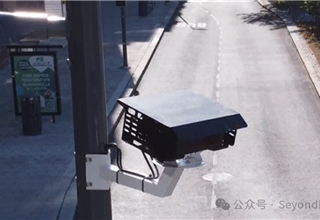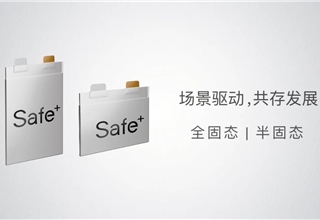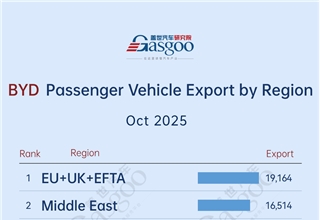Gasgoo.com (Shanghai) - Beginning this year, the National Development and Reform Commission started commencing a crackdown on monopolies in a variety of industries, ranging from gold apparel to milk-based products. The amount of legislation targeting monopolies over the last two months has been unprecedented, with the total value of fines issued during the two month period far exceeding the combined fines for the last five years. On the heels of this success, the NDRC has its sights set on new industries for new anti-monopoly investigations: primarily the oil, telecommunications, banking and automotive industries.
Whether there are enterprises in the automotive industry that constitute monopoly figures remains an issue of intense debate. According to the traditional explanation, an industry is being threatened by a monopoly when one or a few enterprises have successfully coordinated their resources in order to arbitrarily control production, sales and prices, with the ultimate goal of sustaining high profit rates. Adhering to this definition, it seems hard to argue that the automotive industry is an example of monopoly. Even its most powerful enterprise, Volkswagen AG, controls just a 20 percent share in the market. As large as that share is, it is in no way large enough to control the market’s overall supply and production volumes and dictate artificially set prices. VW also does not have the means to coordinate with its competitors to control these market factors.
That said, there are still concerns that monopolies may exist within the automotive industry supply chain. In response, Gasgoo.com (Chinese) conducted a week-long survey on the issue, collecting opinions from 1,872 industry figures and analysts.
In the first question of the survey, participants were asked whether or not they believed there are actions being made in the automotive industry that are indicative of monopolies. The vast majority of participants, 72 percent, agreed with that notion, while 18 percent disagreed and the remaining ten percent were undecided.
According to the Anti-monopoly Law of the People's Republic of China, agreements between various enterprises in a particular industry to coordinate their resources for profit gain, dominant enterprises' abuse of their market position and other such actions that undermine market competitiveness all constitute monopolistic behavior. For an enterprise to be defined as a monopoly according to the legislation, it needs to possess the capability to control overall product price, production volume or sales volume in a market, or limit the entry of competing enterprises into said market. Many believe that the several import dealerships operating in the Chinese market fit this description.
The Anti-monopoly Law also possesses two clauses that cleanly define the situations in which agreements between enterprises are defined as monopolistic. According to the thirteenth and fourteenth clauses, such agreements are deemed monopolistic when they limit the production and/or sales of products, restrict the acquisition and development of new technology, equipment or R&D, divide up sales or material acquisition markets, or set predetermined artificial prices for products. Agreements between OEMs and their dealerships for minimum prices and manufacturers’ control of the aftermarket and auto part segments may be defined as monopolistic under the above terms.
The legislation does, however, allow for certain limited inter-enterprise agreements. According to the clause, such agreements are permissible is they can be proven to have been enacted for the sake of developing technology and/or R&D capability, improving product quality, lowering production costs, increasing efficiency, unifying industry specifications and standards, boosting the capabilities of small or medium-sized enterprises, decreasing environmental waste, aiding public goals, preventing excess production and protecting the balance of foreign trade. If an agreement is determined to fall in one of these categories, and if the responsible enterprises can assure that it does not harm market competition and consumer interests, it can be permissible under the law.
That said, interregional sales protection, OEM-dealership pricing agreements and manufacturer control of the auto part and aftermarket service fields do not seem to match any of the above qualifications allowing for exemption from the Anti-monopoly Law. These actions, alongside the dominance of certain dealerships in the import car market, are the most prominent targets for anti-monopoly policies.
In the second question of the survey, participants were asked which of the above four actions is most monopolistic. 31 percent of participants responded that import car dealerships’ control of the market is the phenomenon most reminiscent of a monopoly. Meanwhile, 22 percent pointed to OEM-dealership pricing agreements and dominance of the auto part and aftermarket service fields. Only 15 percent cited interregional sales protection. The remaining ten percent had other choices in mind.
Following the introduction of new legislation regarding automobile brand management, the current model of a sole regional distributor and certified import automobile dealerships began forming in the country. Prior to that, automobiles of a particular brand could be sold through a number of different dealership networks, with prices being decided by the resellers themselves. Following the introduction of certified dealerships, pricing for these vehicles became wholly decided by the chief sole distributor. These distributors set pricing in order to accommodate for both taxes from customs and their own profit gains. The fact that these distributors are the sole outlets for certain vehicles as well as allegations that they artificially boost prices for said vehicles have been cited by many as signs that they constitute a monopoly.
OEMs’ control over the aftermarket customer service and auto part fields is another aspect directly related to consumer interest. Most manufacturers use their position of dominance to restrict their suppliers from selling auto parts to non-certified repair shops. These manufacturers also enforce that their dealerships only buy and use parts designated by them. Finally, owners of their vehicles are forced to go to certain certified 4S dealerships for aftermarket support and maintenance, otherwise they risk having their warranties nullified. These questionably monopolistic practices may also harm the interests of consumers.
Pricing controls set by OEMs and forced upon dealerships is an issue that affects sellers of both domestically-manufactured and imported vehicles. There is debate on whether the agreements regarding pricing made between manufacturers and dealerships constitute monopolistic actions or not. There are those who maintain that such agreements are entirely voluntary between both parties and contribute to the overall stability of the market.
The final verdict on whether the above actions are monopolistic or not rests in the hands of the government's upcoming investigations. In the final question, participants were asked to comment on their expectations for the anti-monopoly investigations. A full 46 percent of respondents said that there will be no major change as a result of the investigations, while 33 percent expected that there might be some very minor restrictions put in place on manufacturers. Only 13 percent maintained that the investigations will lead to a drastic change in the interest of consumers. The remaining eight percent were undecided.
One of the chief factors driving the investigation sis the high price of import automobiles in the country. Most debate concerning the topic is still focused on distributors and dealerships of imports, and is generally not being discussed about in terms of domestically-produced vehicles. There is still no clear signal on what steps the government, via the NDRC and State Administration for Industry and Commerce (SAIC), is taking, with the China Automobile Dealers Association having issued reports both confirming and denying that they were surveyed by the government. Therefore there are still a lot of doubts on the effectiveness of the official investigation. Furthermore, it goes without saying that manufacturers will try their best to prevent anything from hindering their commercial interest.
Ever since 2005, when the NDRC, the SAIC and Ministry of Commerce set up the foundation for the current business model for import automobiles, issues of difficult relations between manufacturers and dealerships, increasing inventory pressure, incidents of tie-in sales, growing consumer complaints and other negative phenomena have become increasingly more frequent. Many in the industry are looking in hope to the anti-monopoly investigations to help solve some of these issues and safeguard consumer interests.









